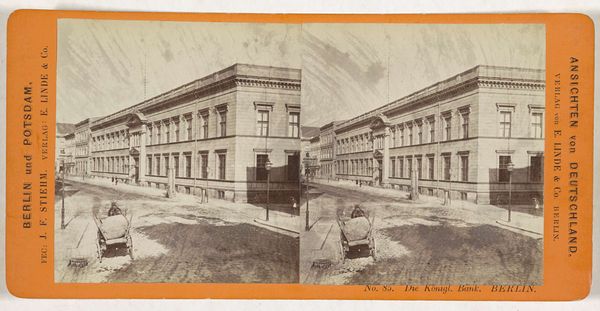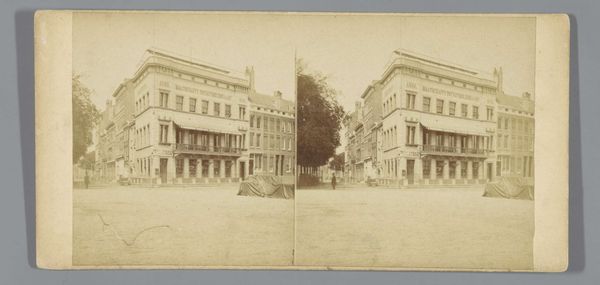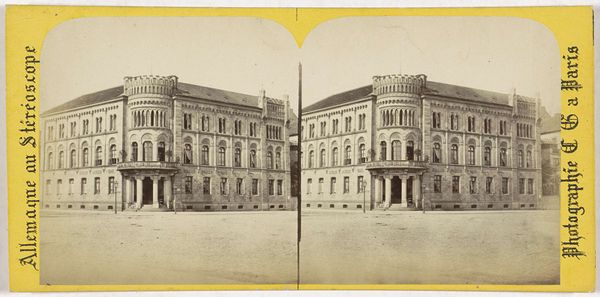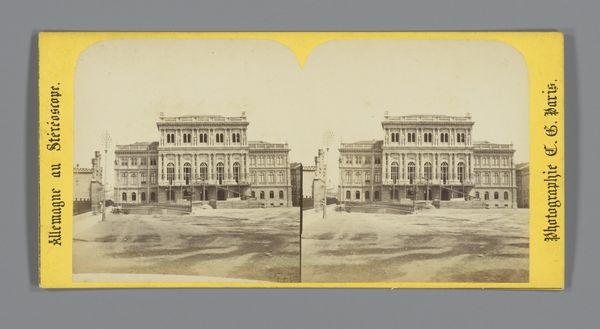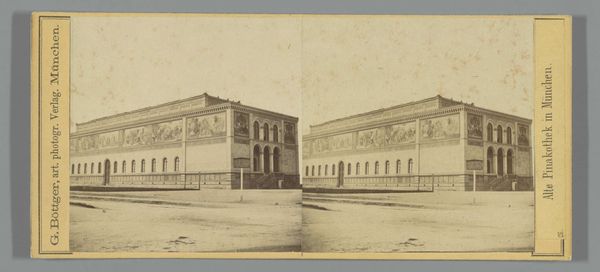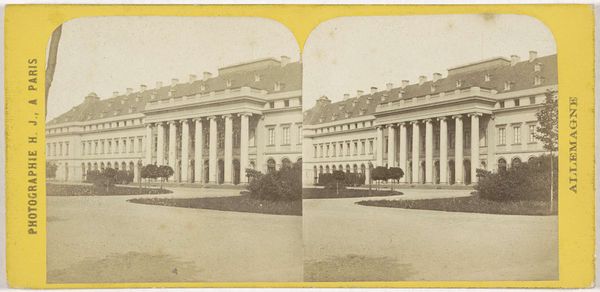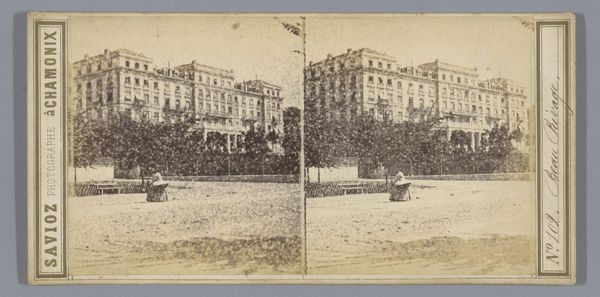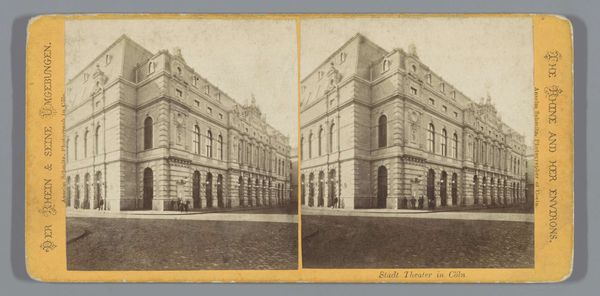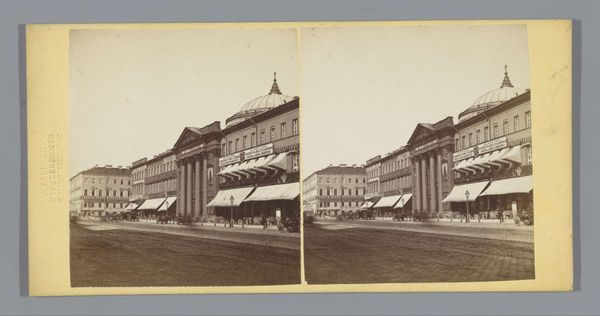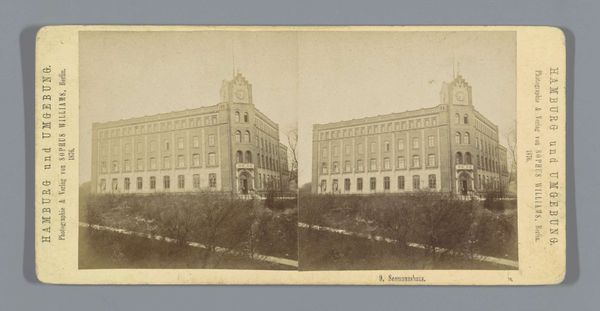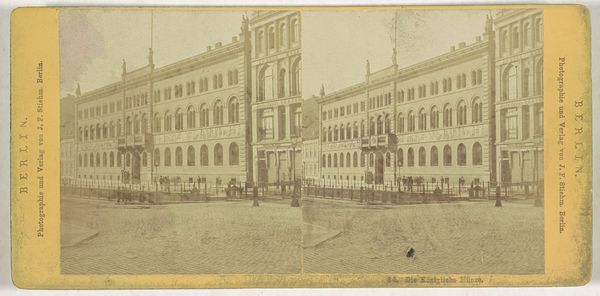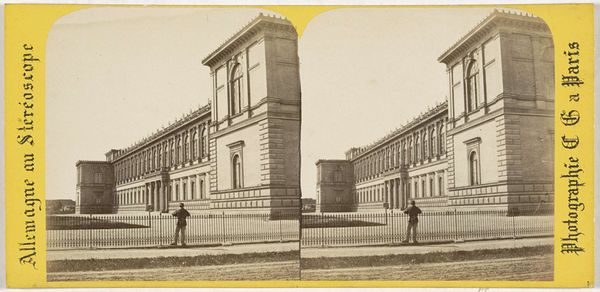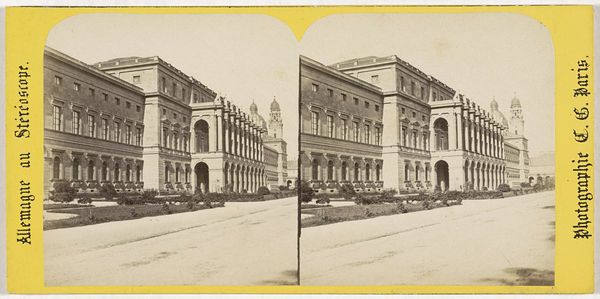
Dimensions: height 87 mm, width 177 mm
Copyright: Rijks Museum: Open Domain
Curator: The architecture captured in this daguerreotype, taken between 1868 and 1890 by Hermann Selle, exudes an imposing rigidity. The Neues Museum Weimar in crisp, metallic detail. Editor: Yes, a solemn, almost haunting stillness settles over this scene. The neoclassical facade feels stark, its symmetry amplifying a sense of formal grandeur, yet also…emptiness. The unadorned lawn and scattered lumber contribute to the sense of neglect. Curator: The architecture itself signifies a turn to Neoclassicism. Observe the rhythmic articulation of the fenestration; how the geometric divisions within each window mirror the larger grid-like structure of the building. The clarity is striking. Editor: It certainly conveys order, but to what end? One sees temples evoked, halls of judgment. Are we meant to contemplate the virtues or achievements enshrined within, or is this cold precision hinting at societal structures built upon equally rigid, potentially unforgiving, principles? The unfinished logs, I imagine a time of rapid changes in the German state at that time, perhaps a reminder of ongoing transformation or a metaphor for unrealized potential, with social shifts as new political power take form. Curator: Such contextual inferences are tempting, but the photograph is undeniably concerned with its intrinsic visual language. Consider the stark contrast between light and shadow. The formal arrangement of mass and void that gives depth and three-dimensionality to what could otherwise have been an utterly flat depiction. The lack of human figures removes all emotion! Editor: It speaks volumes, that lack. Buildings always echo the purposes of their builders; temples or schools remind that ideas of collective memory, progress, the passage of time are being conveyed to viewers. So many ideas about culture arise just looking at the structure. Curator: Ultimately, I read this photograph as a formal exercise: light, shadow, the strict Neoclassical style all contribute to it being primarily about architectural composition. Editor: And yet, the chill, formal hand speaks deeply, in spite of that formal constraint. It has encouraged me to ponder what symbols the architects were seeking to convey at that crucial moment of Germany’s history, in times that feel close to our own today.
Comments
No comments
Be the first to comment and join the conversation on the ultimate creative platform.
